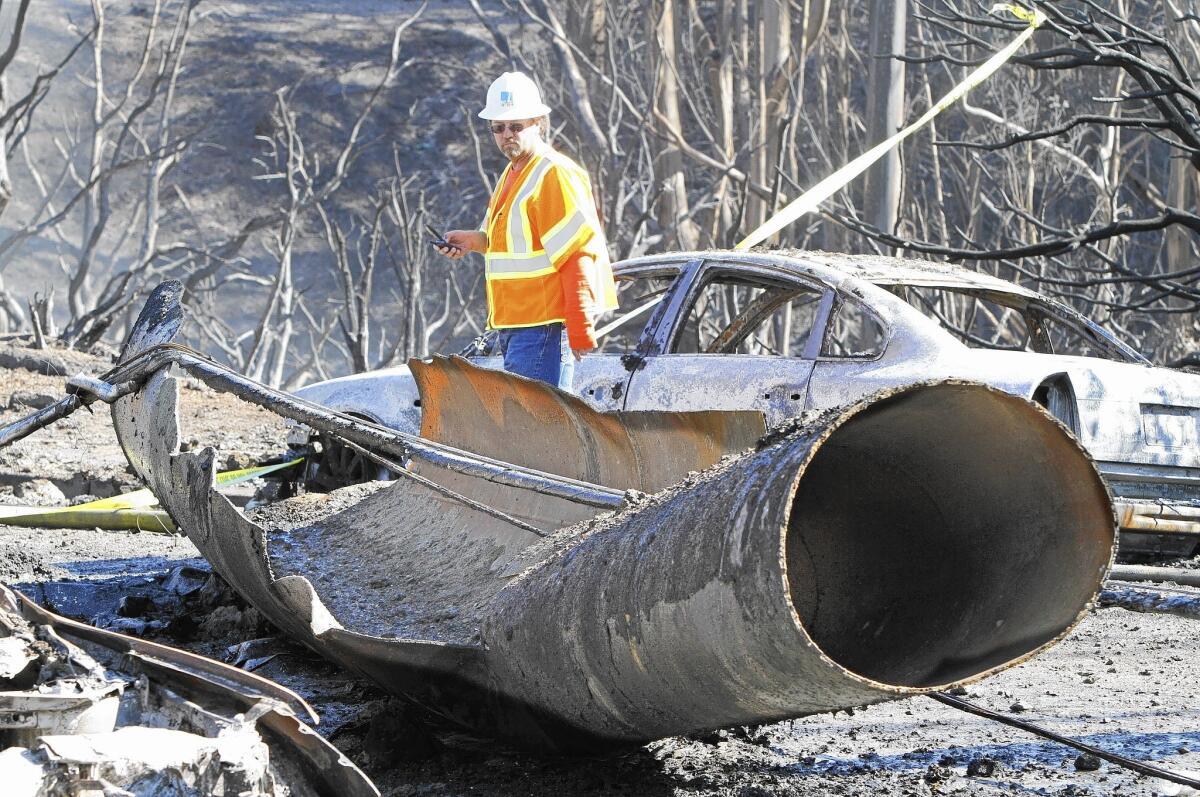PG&E faces possible $2.25-billion fine for role in fatal explosion

- Share via
SACRAMENTO — Pacific Gas & Electric Co., indicted by the federal government for criminal behavior stemming from a Bay Area natural gas explosion that killed eight people and destroyed 38 homes, still faces more trouble.
In the next few months, PG&E will face the likelihood of a fine from the California Public Utilities Commission as high as $2.25 billion for its role in the September 2010 disaster in the city of San Bruno.
On Tuesday, the U.S. attorney in San Francisco announced that a grand jury indicted PG&E on 12 alleged violations of the federal Pipeline Safety Act involving poor record keeping and faulty management practices.
Both actions are directly related to allegations that PG&E knowingly and willingly violated federal standards for years, failed to keep complete safety records and did not foresee threats to its network of large distribution pipelines.
PG&E, headquartered in San Francisco with 15 million customers, has called the proposed fine excessive and said it fails to take into account work already done to test and upgrade its extensive system.
The fine would not be paid by ratepayers and would be the largest in the history of the Public Utilities Commission, if it is approved by a majority of five appointed members.
PUC staff members said they recommended the punishment after an investigation uncovered more than 100 safety violations. The proposed penalty for the explosion of a main gas line running through San Bruno, a residential neighborhood near San Francisco International Airport, is about 60 times greater than the PUC’s previous largest fine of $38 million.
That amount also was levied against PG&E, for a 2008 gas explosion that killed one man in the Sacramento suburb of Rancho Cordova.
The staff-recommended penalty would send $300 million to the state treasury, and $1.95 billion would be spent on improvements to the gas distribution system, stretching from the California-Arizona border to the Central Valley, central and north coasts and the San Francisco Bay Area.
More than half of the fine would be paid by shareholders of the parent, PG&E Corp., and the balance would be credited back to the utility for finished safety projects.
The utility argues that the San Bruno explosion was an “accident.”
Since then, PG&E said it has put its sometimes century-old records in order, built a new pipeline control center, strength-tested 657 miles of transmission lines and replaced or retrofitted almost 400 miles of pipes.
For his part, PUC President Michael Peevey said that since the accident the commission has “made safety a much, much bigger part of the daily culture.”
Critics, though, say that’s not enough.
“I don’t think the PUC has done enough to have people in the field, talking to workers and seeing for themselves what’s going on,” said Mark Toney, executive director of the Utility Reform Network, a ratepayer advocacy group based in San Francisco.
“PG&E is far behind in terms of catching up where it should be,” said state Sen. Jerry Hill (D-San Mateo), who has been battling PG&E since the explosion 31/2 years ago. “Stuff still happens and the system is still broken.”
As for the PUC, he said, “they’ve talked a lot about safety, but they haven’t addressed it.”
Twitter: @marclifsher
More to Read
Inside the business of entertainment
The Wide Shot brings you news, analysis and insights on everything from streaming wars to production — and what it all means for the future.
You may occasionally receive promotional content from the Los Angeles Times.











